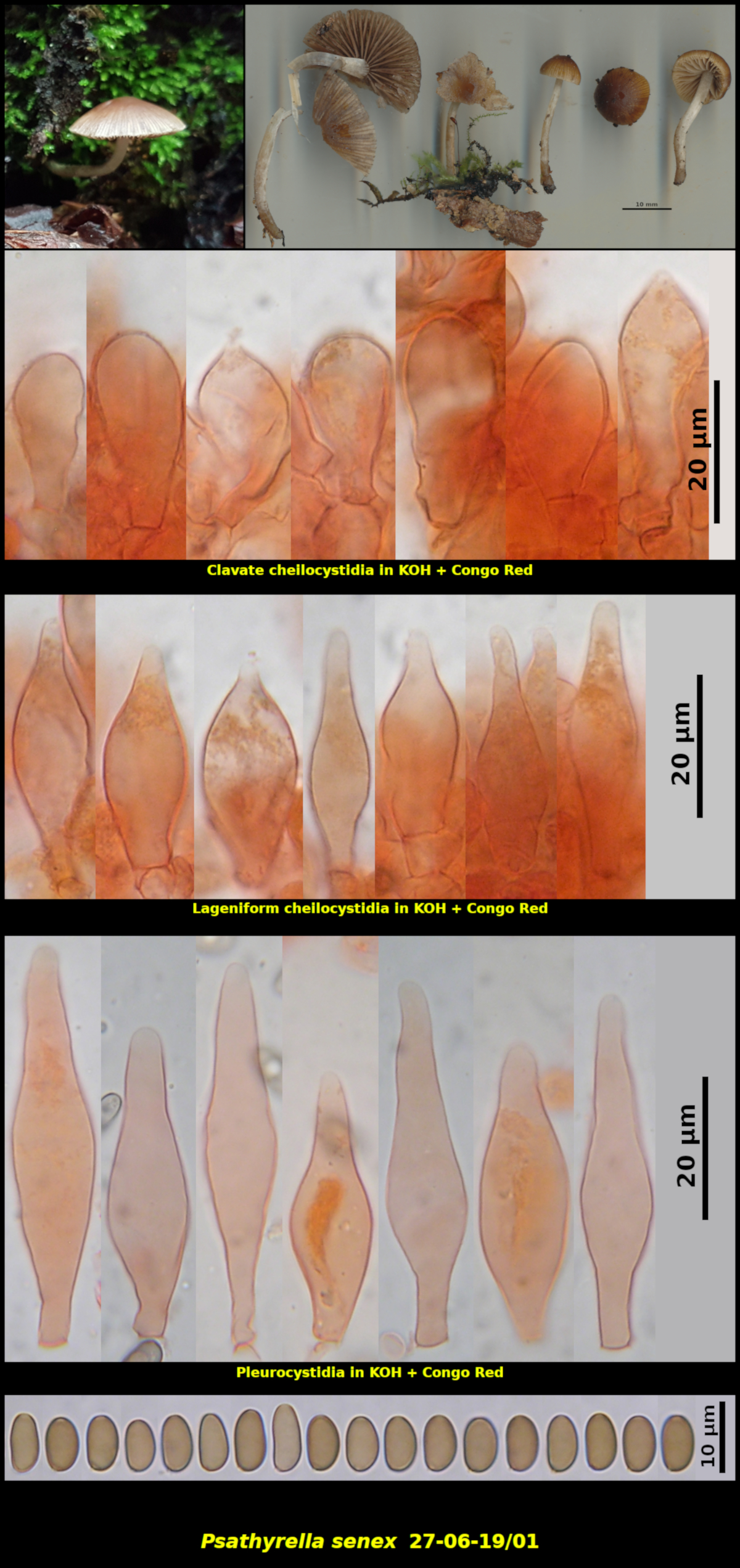Fleshy Fungi of New Brunswick >>
Psathyrella senex
Psathyrella senex (Peck) A.H. Sm.

Scattered (about 5) on a fallen and decaying hardwood log in forest dominated by Quercus rubra, Acer saccharum, Fagus grandifolia and Betula allegheniensis, 6 km SE of Fowler Mt on road between Kennedy Lakes and Dungarvon Protected Natural Areas, New Brunswick (27-06-19/01).
Basidiospores dark orange brown (HSV20:80:10-20) in spore print, phaeseoliform to ellipsoidal, smooth, with a small apical germ pore, 7.3-9.4 x 4.1-5.0 μm, Q = 1.60-2.31 (average[35]: 7.8 x 4.6 μm, Q = 1.72). Cheilocystidia forming a continuous sterile margin, thin-walled, of two kinds 1) clavate to obovoid and occasionally sublageniform, 18-37 x 10.2-15.4 μm and 2) lageniform, smaller but similar to the pleurocystidia, 31-39 x 8.5-13.1 μm. Pleurocystidia scattered but abundant and conspicuous, lageniform, thin-walled, often encrusted with fine granular material at the apex, 32-56 x 8.8-14.1 μm. Basidia 4-spored. Clamp connections present throughout.
Psathrella senex is a typical member of its genus, producing small fragile basidiomata with a dark brown to nearly black spore print. The basidiospores are rather narrow and have a small germ pore. As with many species of Psathyrella, both cheilo- and pleurocystidia are present. Because of the presence of white fibrils toward the margin of the cap it is usually placed by agaricologists among the species having a veil. The fibrils are not apparent in the photo here, but were seen on the freshly collected mushrooms. The field notes of Collection 27-06-19/01 describe the pileus as "minutely white-fibrillose (especially at the margin)". A rather blurry photograph made on a cell phone in the woods shows the youngest basidioma with a white margin.
There is some question in the literature about the distinction between P. senex and P. obtusata. In fact, the current (May 2020) version of MycoBank treats them as synonyms under the latter name. Separation of the two species appears to be based in large part on the cheilocystidia and the relative abundance of the two types, with P. senex having a large number of the lageniform type while P. obtusata has mainly the clavate type. There are DNA sequences available for both species, but these are based on European collections that have no special nomenclatural status. Psathrella senex was originally described from material collected in New York State and it is unknown if it actually occurs in Europe. The opposite may be true for P. obtusata, a European species.